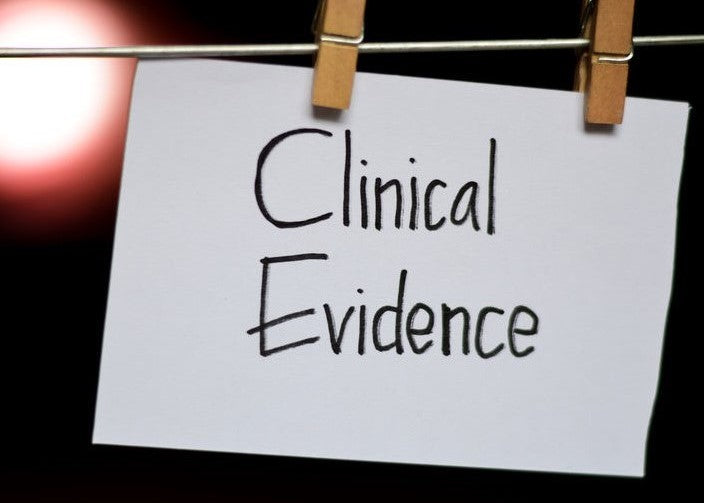
Whether you’re pro or con, are you aware of how the oral motor controversy started? It’s important.
Ultimately, the controversy was initiated with one journal article. Up to that time oral motor was at the “debate” level. When Drs. Lof and Watson, however, published their 2008 nationwide survey, the debate shifted into high gear and was propelled to “controversy” status. It’s been there ever since.
If I only read the questionnaire and the results of the 537 SLPs that completed the questionnaire, minus the authors’ conclusions and chastisement, I would come to a completely different conclusion than the authors did.In essence, I see responsible, successful SLPs doing their job.
But you decide. Read. This. Article—in its entirety. The most often read and referred to parts are the abstract and conclusions. They are extracted and used to devalue and discourage SLPs from doing oral motor therapy. I recommend you read the rest of it.
In brief, 2000 surveys were mailed to SLPs throughout the US; 537 bubbled-in the survey (no write-in spaces were available that I could find):
-
39% worked with Early Intervention & Pre-School kids
-
38% worked with Elementary kids (there’s a broad range of ages and capabilities here)
-
24% with the middle-school, high-school, private practice, medical, and other
-
Many worked with kids with childhood dysarthria and apraxia, structural abnormalities, Down Syndrome, as well as phonologically delayed children
The Positive (rarely mentioned) Survey Results: (Whatever these SLPs were doing, it was working)
-
92.7% observed improved nonspeech oral motor skills
-
86.3% observed improved speech productions
-
68% used oral motor as “fall back” techniques
These numbers look good and are representative of therapists who are using their clinical judgement to remediate their speech-kids. So, why the controversy? EBP, research, and Dr. Lof were thrown into the mix. (No I’m not anti-EBP--just the opposite!)
Dr. Lof has the temerity to tell the 537 SLPs that took time to complete his survey—plus the rest of us—that:“SLPs need to follow the concepts of evidence-based practice in order to determine if these exercises are actually effective in bringing about changes in speech productions.”
Really? A researcher who does not do therapy is telling therapists they don’t know how to do therapy or determine if it’s effective?
Survey Results
-
“85% [456 SLPs] of the respondents reported using NSOMEs to deal with children’s speech sound problems; 15% [80 SLPs] reported that they never used these exercises.”
-
“87% [467 SLPs] of the respondents reported that they learned about this therapy approach by attending CE offerings, workshops, and/or in-services that promote their use.”
-
“68% [365 SLPs] indicated that they only used NSOMEs as a “warm up,” and then they directly worked on speech productions.”
-
“25% [134 SLPs] evenly divided therapy time between implementing exercises and employing techniques that specifically targeted speech.”
-
“7% [37 SLPs] used NSOMEs exclusively instead of other activities to target productions.”

Lof’s and Watson’s Conclusions
The survey was completed by highly educated, experienced speech-language pathologists. They reported positive improvements of their children’s abilities and speech productions. With these positive results one would normally conclude that the oral motor tasks were beneficial, at least with some of the children. Lof (a researcher and professor), however, offered the following conclusions:
In section “Clinical Implications” (page 397), “The results of this nationwide survey support the speculation that the use of NSOMEs [his skewed interpretation of oral motor] by SLPs is frequent. It was also found that SLPs use these exercises for children with a wide variety of disorder subtypes, assume [we don’t know?] that the exercises have benefits that lead directly to speech improvements, and believe there is empirical evidence for their use. However, the current available research does not support the use of NSOMEs to bring about changes in speech sound productions (Lass & Pannbacker, 2008; Ruscello, 2008 [see comments about these resources below]).”
He continues: “SLPs need to follow the concepts of evidence-based practice in order to determine if these exercises are actually effective in bringing about changes in speech productions,” (in the Abstract, page 392).
My Analysis:Seven Clarifications
First, if 85% (456 working, experienced SLPs) successfully use and see speech results by applying their oral motor techniques, the appropriate and respectful response would be to determine what those SLPs do in their therapy, why they do it, and replicate it. The inappropriate and dis-respectful response is to inform your responders they’re doing it wrong because the techniques haven’t yet been proven by research, i.e., in the lab.
Second, each one of the 85% (working, experienced) SLPs are aware of their responsibility to remediate, or generate, speech sounds. Speechis the ultimate goal—no matter how you get there. The “nonspeech” term is inaccurate and disrespectful.
Third, in Dr. Lof’s conclusions, he acknowledges that SLPs use oral motor tasks with “a wide variety of disorder subtypes.” I agree. However, apparently based on the results data, he makes a perplexing assumption that SLPs “assume that the exercises have benefits that lead directly to speech improvements.”The high data-percentages state that the childrendo improve.
Fourth, also in Dr. Lof’s conclusions, he states, “the current available research does not support the use of NSOMEs to bring about changes in speech sound productions (Lass & Pannbacker, 2008; Ruscello, 2008).” This is a popular phrase to use when disparaging oral motor. In response, it’s my opinion, that it was Lass & Pannbacker’s unstatedgoal to prove oral motor ineffectual. Throughout their article, they make the following inference at least 20 times, “There is weak or limited evidence to support the use of NSOMTs.”
In contrast, the thorough Evidence-Based Systematic Review by McCauley et al., in 2009 (associated with ASHA) concludes, there is “Insufficient evidence to support or refute the use of OMEs to produce effects on speech was found in the research literature.” “…There is a “need for more well-designed studies….” They didnot recommend tonot do oral motor therapy.
Regarding Ruscello’s 2008 article, it is not a research review. It is, however, from my perspective, a well annotated article that successfully lays outhis view of “NSOMTs” and the current controversy. I disagree with it, but it’s a thought-provoking article.
Fifth, in his Questionnaire, Dr. Lof lists a random mix of 13 “nonspeech oral motor tasks” and incorrectly assumed that all tasks are used with all kids. Those that successfully do oral sensory-motor therapy know that the tasks are selected and implemented according to the age and needs of each child. Many representative tools and tasks weren’t even listed; the SLPs had only a short list to choose from.
Sixth, there is a glaring misconception that the “exercises” listed in the survey are sound-stim tasks, i.e., "wag your tongue, say an /s/.” This is ludicrous; oral motor tasks facilitate the capability to produce speech. All therapy—no matter the type—builds capability; it’s a process that takes place over time.
Seventh, there is some confusion that (working, experienced) SLPs apply oral motor tasks randomly and haphazardly. To be clear:
-
Competent, thinking therapists, during therapy, simultaneously focuses on the child, analyzes his/her therapy methods, observes how the child is responding, and determines therapeutic adjustments according to the needs of the child.
-
Competent therapists utilize a foundational rationale in their therapy, and
-
SLPs would not continue to do oral motor tasks if they didn’t work.
There is more to the story. I have studied this topic for several years, and have created five Podcourses / Podcasts and five accompanying printed Handouts that chronical the events within the past two decades that have merged and exploded into a tsunami of a Perfect Oral Motor Storm.
The “events’ are organized in five “Waves” and shared in the five podcourses / podcasts. If would be nice if there was one Wave per podcast, but I wasn’t able to do it that way.
Part 1: The Perfect Oral Motor Storm
-
Intro: Goals, Overview of the Controversy, Assumptions
Part 2: The Perfect Oral Motor Storm
-
Wave #1: The Instillation of Evidence-Based Practice(EBP)
-
Wave #2: Lof and Dr. Watson’s2008 Survey that ignited the controversy
-
Wave #3: Forrest and Iuzzini-Seigel’s2008 Study that “proved” their point
Part 3: The Perfect Oral Motor Storm
-
Wave #4:Research Data, a huge wave of anti-oral motor during 2008 and 2009
-
Wave #5: Explanations and Responds to: “Lof’s Five Theoretical Reasons to Question Using NSOME”: Reason #1: Part-Whole Training and Transfer, andReason #2: Strengthening the Articulatory Structures
Part 4: The Perfect Oral Motor Storm
-
Wave #5: Explanations and Responses to: “Lof’s Five Theoretical Reasons to Question Using NSOME”:Reason #3: Relevancy of NSOME to Speech;Reason #4: Task Specificity; andReason #5: Warm-up, Awareness, Metamouth
Part 5: The Perfect Oral Motor Storm
-
The New Wave: A Case for Capability-Based Speech Sound Production Therapy
Listen to the Podcourses at SpeechTherapypd.com (and get the Handouts and CEUs)
Listen to the Podcasts at “The Speech Link” on iTunes, PodBean, TuneIn or Stitcher
Access the Handouts at SpeechDynamics.com
Here’s to effective therapy--have a great week!
Char
Leave a comment (all fields required)
Comments will be approved before showing up.

![#71 Telepractice Tips 'n Info (Part 4) [Is my child working or just playing games?]](http://speechdynamics.com/cdn/shop/articles/Game_Pieces_and_Hand_7_x_3_2048x.jpg?v=1605804364)